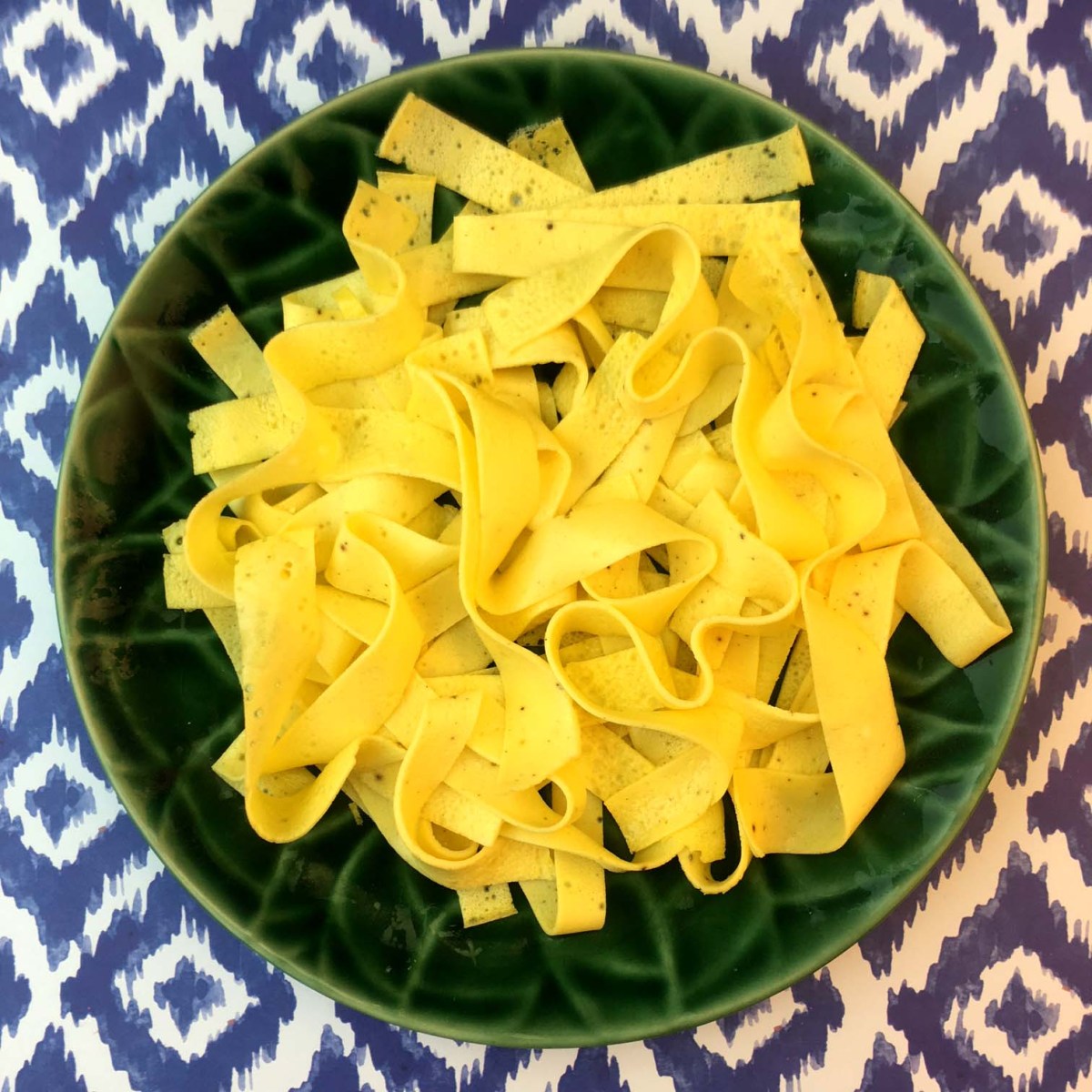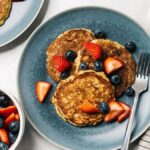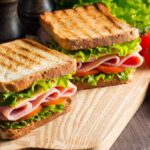Embark on a culinary adventure into the world of low-carb baking, even without relying on eggs! This guide unveils the secrets to crafting delicious and satisfying low-carb treats, from fluffy muffins to hearty bread, all while sidestepping the use of eggs. Discover ingenious flour substitutes, learn effective binding techniques, and master the art of adapting your favorite recipes to fit a low-carb, egg-free lifestyle.
We’ll explore a range of techniques, from utilizing alternative flours like almond and coconut to employing clever binding agents such as chia seeds and flaxseed meal. Through detailed recipes and step-by-step instructions, complete with vibrant imagery showcasing texture and color transformations, you’ll gain the confidence to create delectable low-carb masterpieces without ever needing an egg.
Low-Carb Baking Without Eggs
Low-carb baking can be challenging, especially when eliminating eggs, a key binding agent in many recipes. However, with the right flour substitutes and techniques, delicious and satisfying low-carb baked goods are entirely achievable. This guide will explore suitable flour alternatives and provide a recipe for egg-free low-carb muffins.
Low-Carb Baking Without Eggs: Flour Alternatives
Choosing the right flour substitute is crucial for successful egg-free low-carb baking. Different flours offer varying textures and nutritional profiles, influencing the final product’s consistency and flavor. Careful consideration of these factors is key to achieving optimal results.
| Flour Type | Gluten-Free Status | Nutritional Information (per 100g, approximate) | Texture |
|---|---|---|---|
| Almond Flour | Yes | High in healthy fats, moderate protein, low carbohydrates | Fine, slightly crumbly, can be dry |
| Coconut Flour | Yes | High in fiber, moderate fat, low carbohydrates | Very absorbent, can be dense if not used correctly |
| Flaxseed Meal | Yes | High in fiber, omega-3 fatty acids, moderate protein | Slightly gritty, adds moisture |
| Sunflower Seed Flour | Yes | Good source of healthy fats and protein, moderate carbohydrates | Fine, slightly grainy, mild flavor |
Preparing these flours correctly before use is essential for optimal baking results. Almond flour generally requires no pre-treatment, while coconut flour, due to its high absorbency, often benefits from being lightly toasted in a dry pan for a few minutes to reduce moisture content and enhance its flavor. This toasting process also helps to reduce the slightly gritty texture. Flaxseed meal can be used as is, or can be mixed with water to create a “flax egg” as a binder in some recipes (although this recipe avoids eggs). Sunflower seed flour, like almond flour, usually requires no pre-treatment.
Egg-Free Low-Carb Coconut Flour Muffins
This recipe utilizes coconut flour’s unique properties to create moist and flavorful muffins without eggs.
Ingredients:
- 1 cup coconut flour
- 1/2 cup unsweetened applesauce
- 1/4 cup melted coconut oil
- 1/4 cup unsweetened almond milk
- 1/4 cup erythritol or other granulated sugar substitute
- 1 teaspoon baking soda
- 1/2 teaspoon baking powder
- 1/4 teaspoon salt
- 1 teaspoon vanilla extract
- Optional: 1/2 cup blueberries or other low-carb berries
Instructions:
- Mixing Dry Ingredients: In a large bowl, whisk together the coconut flour, baking soda, baking powder, and salt. The mixture will appear light and fluffy, almost like powdered sugar. (Image description: A light, pale beige powder mixture in a bowl, evenly distributed with no clumps visible.)
- Combining Wet Ingredients: In a separate bowl, combine the applesauce, melted coconut oil, almond milk, sugar substitute, and vanilla extract. The mixture will be slightly viscous and pale in color. (Image description: A pale, creamy mixture in a bowl, smooth and homogenous with a slight sheen from the oil.)
- Combining Wet and Dry: Gently pour the wet ingredients into the dry ingredients, mixing until just combined. Be careful not to overmix, as this can lead to tough muffins. If using berries, gently fold them in at this stage. The batter will be thick and slightly sticky. (Image description: A thick, slightly lumpy batter, pale beige with visible specks of coconut flour. If berries are added, they will be evenly distributed throughout.)
- Baking: Fill muffin tins about 2/3 full. Bake at 350°F (175°C) for 20-25 minutes, or until a toothpick inserted into the center comes out clean. The muffins will have a light golden-brown color and a slightly firm texture. (Image description: Golden-brown muffins in a muffin tin, slightly puffed and with a slightly cracked top. The muffins appear moist and tender.)
- Cooling: Let the muffins cool in the tin for a few minutes before transferring them to a wire rack to cool completely. (Image description: Muffins on a wire rack, still slightly warm, with a subtle aroma of coconut and baked goods.)
Egg-Free Low-Carb Binding Agents
Eggs play a crucial role in many baked goods, providing structure, moisture, and richness. However, for those following a low-carb diet or avoiding eggs for other reasons, finding suitable replacements is essential. Several alternatives can effectively mimic the binding properties of eggs, allowing for the creation of delicious and satisfying low-carb baked goods.
Egg substitutes in low-carb baking primarily work by thickening the batter or dough, creating a cohesive structure, and adding moisture. The choice of substitute often impacts the final product’s texture, moisture content, and shelf life. Careful consideration of the desired outcome is vital when selecting a replacement.
Low-Carb Binding Agent Options
The effectiveness of different binding agents varies depending on the recipe and desired texture. Some popular choices include chia seeds, flaxseed meal, and applesauce. Each offers unique properties and contributes differently to the final product. Chia seeds and flaxseed meal, when mixed with water, form a gel-like substance that binds ingredients together, similar to egg whites. Applesauce adds moisture and helps to bind, but its impact on texture differs from that of chia or flax.
Low-Carb Pancakes with Chia Seed Binding
This recipe demonstrates the use of chia seeds as a binding agent in low-carb pancakes. The resulting pancakes are tender, slightly moist, and possess a subtle nutty flavor from the chia seeds.
Ingredients:
* 1 cup almond flour
* 1/4 cup coconut flour
* 2 tablespoons chia seeds
* 1/4 cup unsweetened almond milk
* 1 tablespoon melted coconut oil
* 1 teaspoon baking powder
* 1/2 teaspoon salt
* Sweetener to taste (e.g., stevia, erythritol)
Instructions:
1. Mixing the Chia Seeds: In a small bowl, combine the chia seeds with 1/4 cup of almond milk. *(Image: A small bowl with chia seeds and almond milk, showing the seeds beginning to absorb the liquid and swell slightly.)*
2. Combining Dry Ingredients: In a separate large bowl, whisk together the almond flour, coconut flour, baking powder, and salt. *(Image: A large bowl with almond flour, coconut flour, baking powder, and salt, showing the dry ingredients before mixing.)*
3. Combining Wet and Dry Ingredients: Add the chia seed mixture and melted coconut oil to the dry ingredients. Gently mix until just combined. Avoid overmixing, as this can lead to tough pancakes. *(Image: The large bowl showing the wet and dry ingredients partially mixed, the batter still appearing slightly lumpy.)*
4. Adjusting Consistency: Add more almond milk, a tablespoon at a time, if needed to achieve a smooth, pourable batter. *(Image: The large bowl with the batter showing a smooth, pourable consistency.)*
5. Cooking the Pancakes: Heat a lightly oiled griddle or frying pan over medium heat. Pour 1/4 cup of batter onto the hot surface for each pancake. Cook for 2-3 minutes per side, or until golden brown. *(Image: A griddle with pancakes cooking, showing the golden-brown color developing.)*
Impact of Binding Agents on Moisture and Shelf Life
The choice of binding agent significantly affects the final product’s moisture content and shelf life. For example, pancakes made with chia seeds tend to have a slightly higher moisture content compared to those made with flaxseed meal, which can result in a slightly softer texture. However, flaxseed meal might offer a slightly longer shelf life due to its higher fiber content. Applesauce, while providing moisture, can shorten shelf life compared to chia or flax due to its higher water content and susceptibility to spoilage. Storage in an airtight container in the refrigerator is recommended for all egg-free low-carb baked goods to maintain freshness and extend shelf life.
Low-Carb Egg-Free Dessert Recipes

Indulge in the sweetness of low-carb desserts without compromising your dietary goals or relying on eggs. These recipes utilize alternative binding agents and clever techniques to create delightful treats that are both satisfying and healthy. Each recipe offers a unique flavor profile, showcasing the versatility of egg-free low-carb baking.
Chocolate Avocado Mousse
This rich and decadent mousse utilizes the creamy texture of avocado to replace eggs, resulting in a surprisingly delightful and healthy dessert. The deep chocolate flavor is balanced by a hint of sweetness, creating a perfect ending to any meal.
- Ingredients: 1 ripe avocado, 1/4 cup unsweetened cocoa powder, 1/4 cup erythritol or your preferred low-carb sweetener, 1 teaspoon vanilla extract, 1/4 cup heavy cream (optional, for extra richness), pinch of salt.
- Step 1: Blend the Base: Begin by adding the avocado, cocoa powder, sweetener, vanilla extract, and salt to a food processor or blender. The mixture will initially appear as a chunky combination of dark green avocado and brown cocoa powder.
- Step 2: Achieve Smoothness: Blend until completely smooth and creamy. The color will transition into a deep, dark brown, almost black, with a consistent, velvety texture. At this stage, the mixture will be quite thick.
- Step 3: Incorporate Cream (Optional): If using, gently fold in the heavy cream until just combined. This will lighten the mousse slightly, adding a subtle fluffiness to the texture and enhancing the richness. The color will remain largely unchanged, but the consistency will become noticeably lighter and airier.
- Step 4: Chill and Serve: Refrigerate for at least 30 minutes to allow the mousse to chill and set. The consistency will firm up slightly, making it easier to serve. Serve chilled in small glasses or bowls, garnished as desired. The final product will be a rich, dark brown mousse with a smooth, almost cloud-like texture.
Coconut Chia Seed Pudding
This pudding offers a delightful tropical twist, combining the creaminess of coconut milk with the texture of chia seeds. The pudding is naturally sweetened and provides a healthy dose of fiber.
- Ingredients: 1 can (13.5 oz) full-fat coconut milk, 1/4 cup chia seeds, 2 tablespoons erythritol or your preferred low-carb sweetener, 1 teaspoon vanilla extract, 1/4 teaspoon almond extract.
- Step 1: Combine Ingredients: In a bowl, whisk together the coconut milk, chia seeds, sweetener, vanilla extract, and almond extract. The mixture will initially appear as a milky white liquid with visible chia seeds dispersed throughout.
- Step 2: Allow to Thicken: Cover the bowl and refrigerate for at least 4 hours, or preferably overnight. During this time, the chia seeds will absorb the liquid, creating a thick, pudding-like consistency. The color will remain largely unchanged, but the texture will transform from a liquid to a creamy, gel-like consistency.
- Step 3: Serve Chilled: Serve the pudding chilled. The final product will be a creamy white pudding with a slightly grainy texture from the chia seeds. The taste will be subtly sweet with a distinct coconut flavor.
Almond Flour Peanut Butter Cookies
These cookies offer a satisfying crunch and a rich peanut butter flavor. Almond flour provides a low-carb base, and the absence of eggs doesn’t compromise the texture.
- Ingredients: 1 cup almond flour, 1/2 cup peanut butter (natural, no added sugar), 1/4 cup erythritol or your preferred low-carb sweetener, 1/4 teaspoon baking soda, 1/4 teaspoon salt.
- Step 1: Combine Dry Ingredients: In a bowl, whisk together the almond flour, baking soda, and salt. The mixture will be a light beige color, with a slightly powdery texture.
- Step 2: Incorporate Wet Ingredients: Add the peanut butter and sweetener to the dry ingredients. Mix until a dough forms. The dough will initially be crumbly, but with continued mixing, it will come together into a cohesive mass. The color will be a darker beige, due to the peanut butter.
- Step 3: Shape and Bake: Roll the dough into small balls and flatten slightly on a baking sheet lined with parchment paper. The cookies will be slightly pale beige and round in shape.
- Step 4: Bake to Perfection: Bake at 350°F (175°C) for 8-10 minutes, or until the edges are lightly golden brown. The cookies will spread slightly during baking, and their color will deepen to a light golden brown. The texture will change from soft to firm and slightly crispy.
Mastering the art of egg-free, low-carb baking opens up a world of culinary possibilities. From perfectly textured muffins to surprisingly moist breads and decadent desserts, you’ll find that deliciousness and dietary restrictions can coexist harmoniously. With the techniques and recipes presented here, you’ll confidently navigate the world of low-carb cooking, creating delightful meals and treats that are both healthy and satisfying. Embrace the challenge, experiment with flavors, and enjoy the rewarding journey of creating your own egg-free, low-carb culinary masterpieces.
Commonly Asked Questions
Can I freeze low-carb, egg-free baked goods?
Yes, many low-carb, egg-free baked goods freeze well. Wrap them tightly in plastic wrap and then foil to prevent freezer burn, and thaw at room temperature or in the refrigerator.
What if my low-carb, egg-free baked goods are too dry?
This often happens if you’ve used too much of a drying flour substitute. Next time, try adding a bit more liquid (like unsweetened applesauce or milk alternative) or a tablespoon of oil.
Are all low-carb flour substitutes interchangeable?
No, each flour has a unique texture and moisture-absorbing capacity. Experimentation is key to finding the best substitute for each recipe.
How long will my egg-free low-carb baked goods last?
This depends on the recipe and storage. Properly stored, many will last 3-5 days at room temperature or up to a week refrigerated. Freezing extends shelf life significantly.


